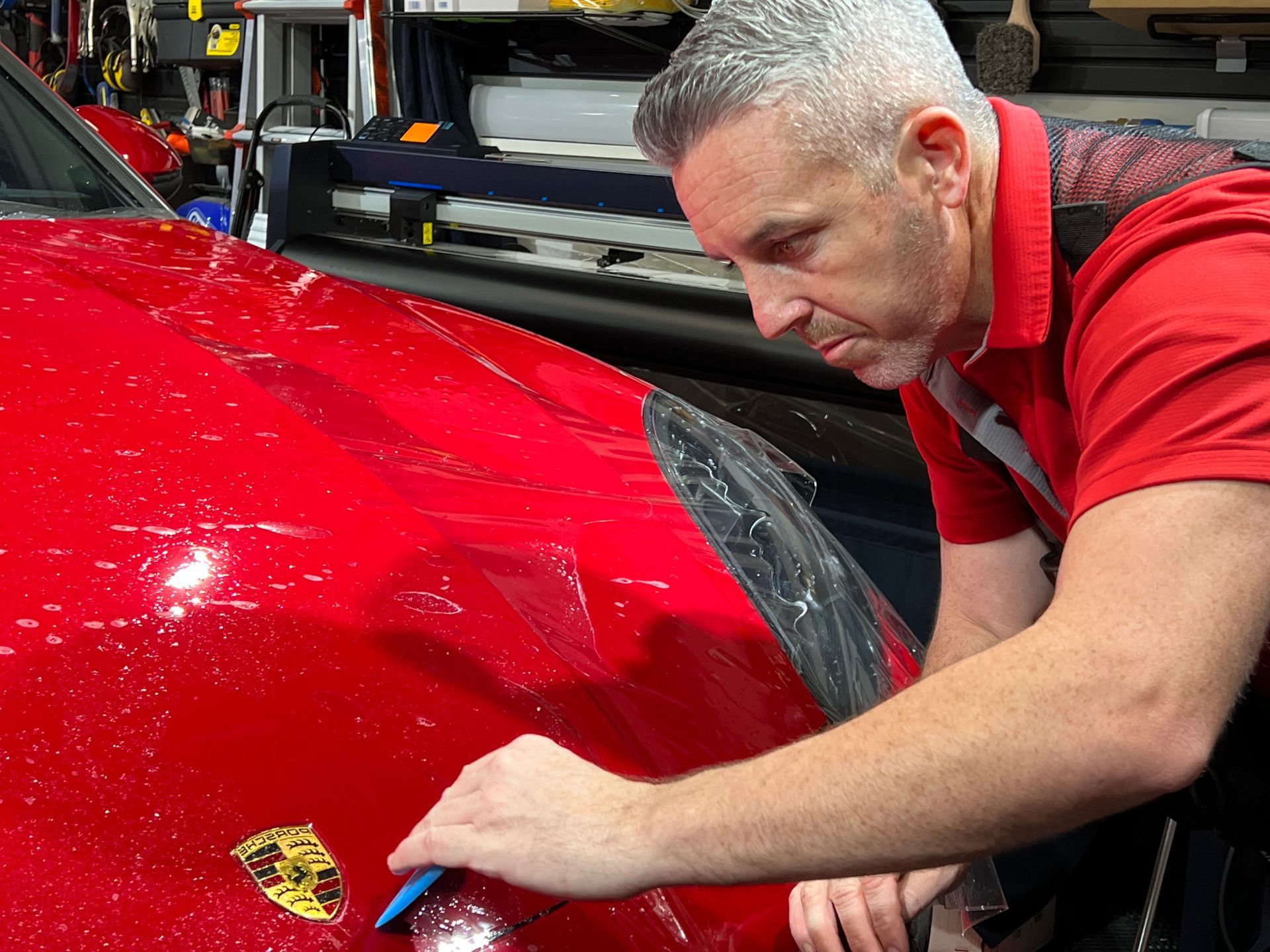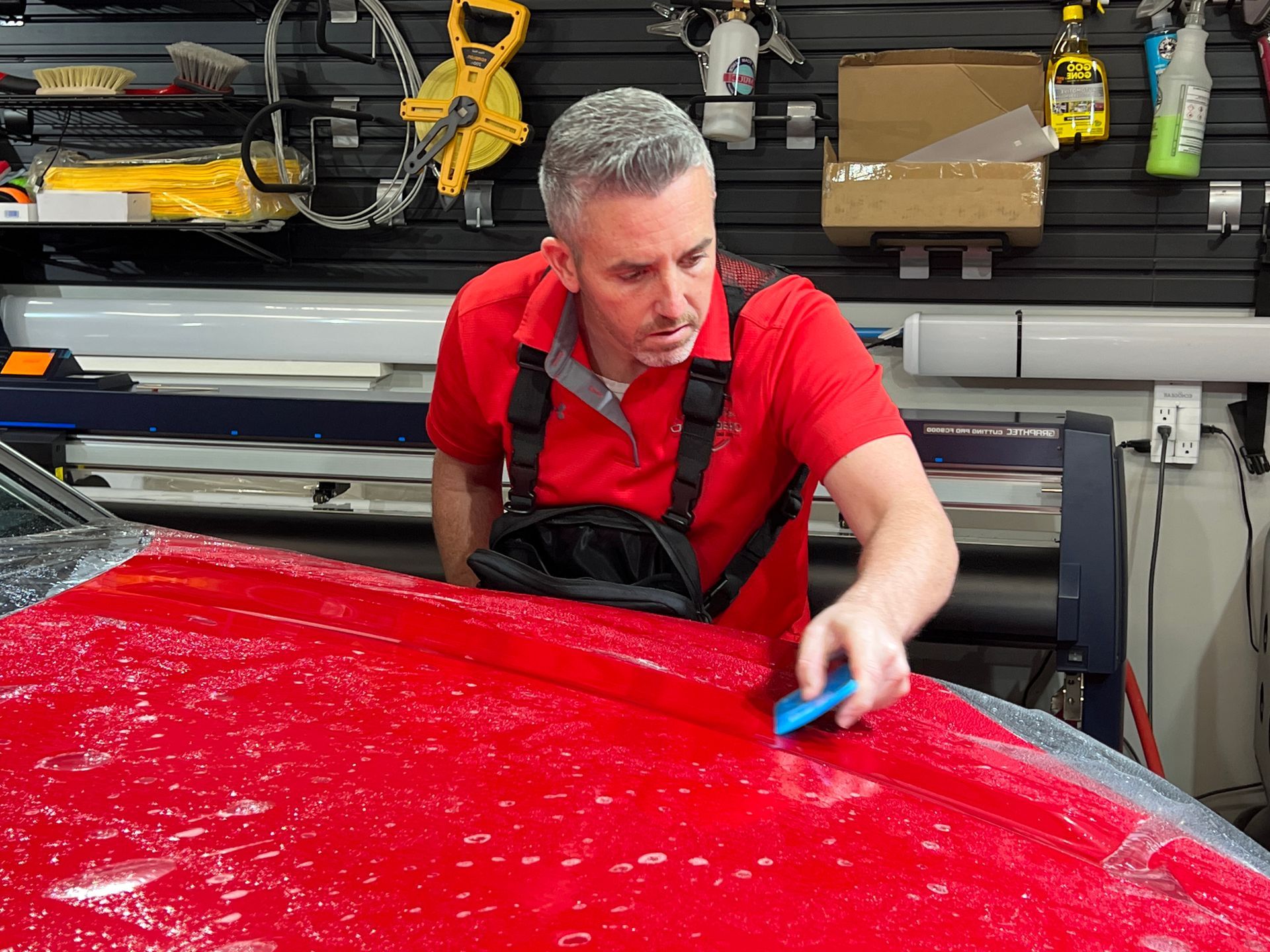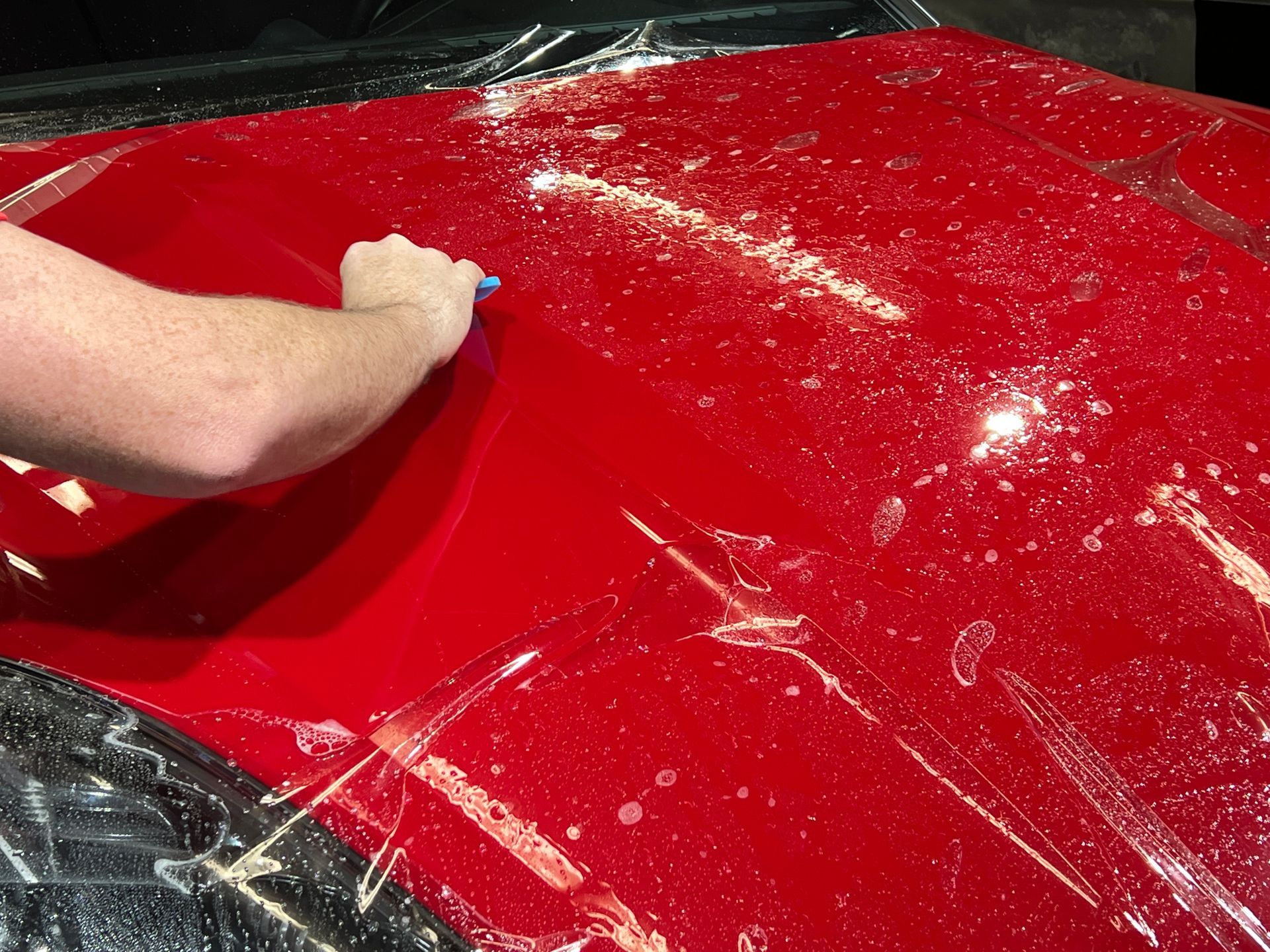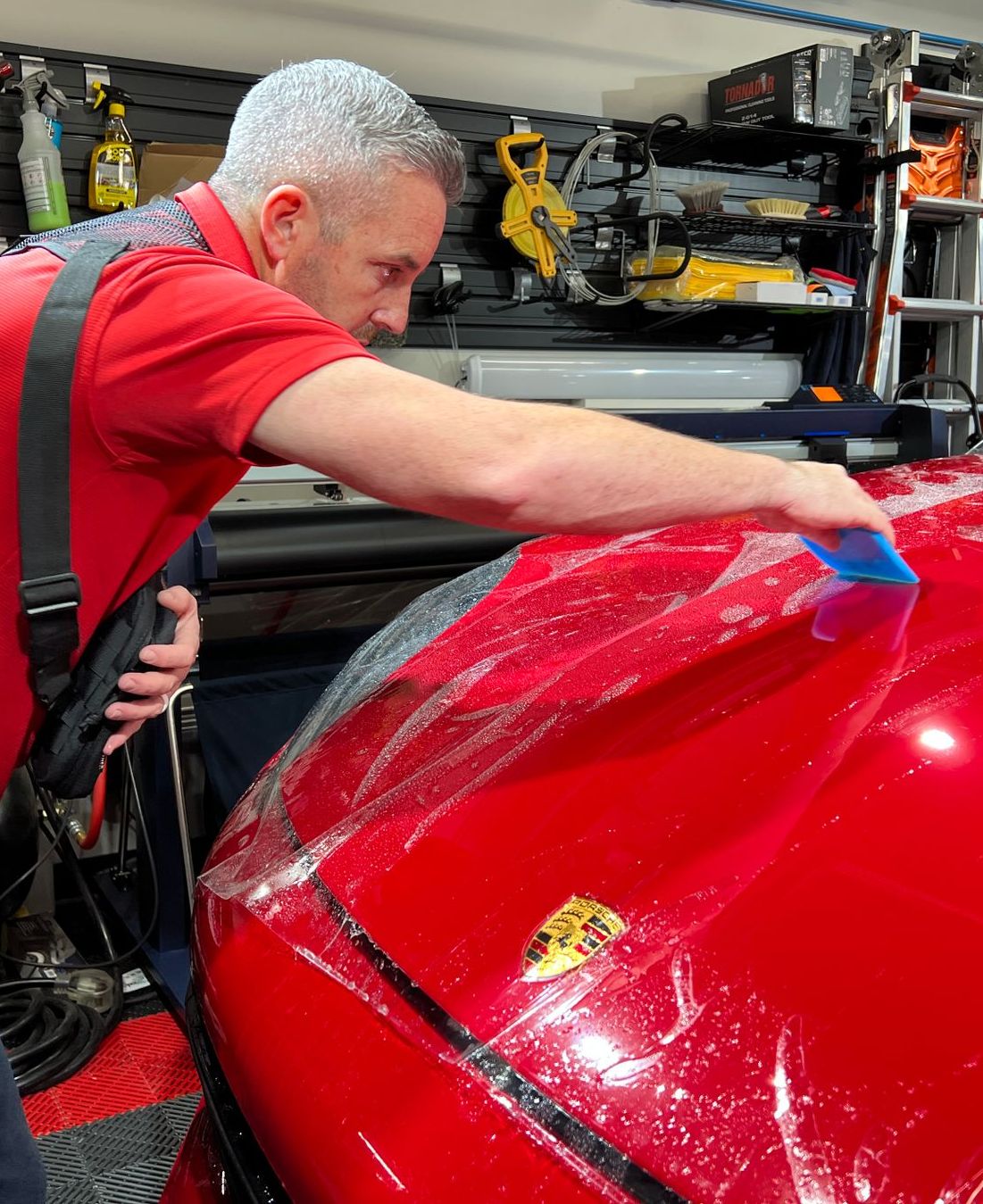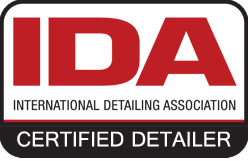The Benefits of Paint Protection Film: Guarding Against Road Debris
Paint protection film offers a reliable solution. By acting as a sturdy barrier, a paint protection film absorbs impacts from road debris, helping to maintain your vehicle’s sleek exterior. From surface preparation to final adjustments, it's clear that applying a high-quality paint protection film can be a game-changer.
Paint protection film acts as a transparent shield, defending the car's paint from road debris such as rocks, gravel, and sand. This protective barrier reduces the risk of chipping, scratching, and other damage caused by environmental elements, preserving the vehicle's aesthetics and resale value over time.
How to Apply Paint Protection Film
Applying paint protection film demands precision and care, ensuring your vehicle's surface stays shielded from the damaging effects of road debris. Let's break down the steps to expertly applying paint protection film, starting with the crucial first step.
- Step 1: Thoroughly Clean the Vehicle: Before applying the paint protection film, it's essential to wash and dry the vehicle meticulously. Any dirt, dust, or debris left on the surface can create bubbles and imperfections in the film. Use a high-quality car shampoo and microfiber towels to ensure a spotless finish.
- Step 2: Prepare the Work Area: Choose a clean, dust-free environment to apply the film. A well-lit garage or professional detailing shop is ideal. Gather all necessary tools, including the paint protection film, application solution, squeegees, and a sharp utility knife.
- Step 3: Measure and Cut the Film: Measure the sections of your vehicle where the paint protection film will be applied. Cut the film to the appropriate size, leaving a little extra margin to ensure complete coverage. Be precise in your measurements to avoid any gaps or overlaps.
- Step 4: Apply the Solution: Spray the application solution generously on both the vehicle's surface and the adhesive side of the film. This solution helps the film slide into place, making adjustments easier.
- Step 5: Position the Film: Carefully position the film on the vehicle, starting with one section at a time. Use a squeegee to gently press the film onto the surface, starting from the center and working outward. This helps to eliminate air bubbles and ensure a smooth, even application.
- Step 6: Secure the Edges: Once the paint protection film is positioned correctly, use the squeegee to secure the edges. Pay special attention to corners and curves, making sure the film adheres properly without lifting.
- Step 7: Trim Excess Film: Use a sharp utility knife to trim any excess film along the edges of the vehicle's panels. Be cautious not to cut too close to the paint to avoid scratches.
- Step 8: Final Inspection and Curing: Inspect the entire application to ensure there are no air bubbles or imperfections. Allow the film to cure for a specified period, usually 24-48 hours, before exposing the vehicle to water or extreme conditions.
By following these steps, you can achieve a professional-grade paint protection film application, ensuring your vehicle stays protected and looks pristine for years to come.
Road Debris Protection
A drive down the road, especially on highways and interstates, exposes your vehicle to an onslaught of small rocks, pebbles, and debris that can harm your car's exterior. Even at relatively slow speeds, these tiny projectiles can inflict unsightly chips and scratches on your vehicle's paint, gradually diminishing its visual appeal and potentially lowering its resale value. This is where the reliable defense of paint protection film comes into play. By absorbing the impact of these nuisances, the paint protection film acts as an invisible shield, protecting your car's paint from harm. This benefit not only preserves the appearance of your vehicle but also translates into fewer visits to the body shop and significant cost savings related to paint repairs over time.
Imagine a paint protection film as a resilient knight's armor; while on the exterior it appears sleek and unobtrusive, it provides robust protection against the relentless barrage of road debris directed at your trusty steed (or, in this case, your beloved vehicle). But it's not just about preventing unsightly chips and scratches; a paint protection film also minimizes the risk of fading caused by UV rays. The film acts as a barrier, reducing the harmful effects of prolonged exposure to the sun's rays, which can lead to the fading and deterioration of the vehicle's paint over time. Think of PPF as a shield against UV rays, much like sunscreen protects your skin from sunburn, keeping your car looking radiant and vibrant for extended periods.
Paint protection film's resilience extends beyond impacts from road debris and UV rays; it also defends against environmental elements such as road salt, sand, and corrosive substances that pose potential threats to your car's exterior. The protective benefits of paint protection film go above and beyond safeguarding against road debris. It acts as a comprehensive shield, offering protection against various external elements that can compromise your vehicle's aesthetics and structural integrity.
Weather Resistance Features
Paint protection film doesn't just guard your car against rocks and debris; it also acts as a shield against various weather elements. We all know that prolonged exposure to sunlight can fade and dull the paint on your car. UV rays can be harsh, but with paint protection film, you get an extra layer of defense. The film's UV resistance properties work like a force field, preventing the sun's rays from fading your car's beautiful paint job. Just imagine: Your car is out there, under the blazing sun on a hot summer day, and yet, its vibrant color remains intact. That's what you get with a paint protection film: long-lasting protection against the damaging effects of UV rays. It's like sunscreen for your car!
Now, let's talk about rain. Rainwater might seem harmless, but it contains impurities that can damage your car's paint over time. Acid rain is particularly harmful, as it contains pollutants that can cause corrosion and wear down the paint surface. But here's where paint protection film steps in: It creates a barrier, protecting your car from these damaging effects and preserving its glossy finish. Think of it as an invisible umbrella for your car that shields it from acid rain, just like you would protect yourself with an umbrella on a rainy day.
In addition to UV resistance and protection against acid rain, a paint protection film also has hydrophobic properties. This means that it repels water, reducing the risk of water spots forming on your car's surface. When it rains or when you wash your car, the water beads up and slides right off, leaving your car looking clean and spotless. From shielding your car against UV rays to repelling water and safeguarding the paint from acid rain, a paint protection film proves to be a reliable guardian against a multitude of weather elements.
Types of Paint Protection Film
When it comes to safeguarding your vehicle's paint, not all paint protection films are created equal. Each type of film offers unique features and benefits that cater to specific needs and preferences. Let's take a closer look at some of the most common types of PPF available on the market today.
- Thermoplastic Polyurethane (TPU): Thermoplastic polyurethane (TPU) is renowned for its remarkable self-healing properties. This means that TPU has the ability to recover from minor scratches and swirl marks, maintaining the pristine appearance of your vehicle's paint over time. Its self-healing capabilities make it an ideal choice for individuals who prioritize long-term protection and maintenance without compromising on aesthetics.
- Polyvinyl Chloride (PVC): Polyvinyl Chloride (PVC), on the other hand, is typically more affordable than TPU but lacks the self-healing properties that its thermoplastic counterpart offers. While PVC provides reliable protection against common road hazards, it may require more frequent care and maintenance to ensure that the vehicle's paint remains in optimal condition. It's a great option for those seeking cost-effective paint protection without the need for advanced self-healing capabilities.
- Advanced Nanotechnology Films: For high-end vehicles where both appearance and performance are crucial, advanced nanotechnology films go above and beyond in terms of quality and functionality. These films are engineered to provide superior clarity, ensuring that the natural beauty and color of the paint shine through without any distortion. Additionally, they offer enhanced self-healing features, further minimizing the appearance of scratches and imperfections.
By understanding the unique benefits and characteristics of each type of paint protection film, you can make an informed decision based on your specific requirements and priorities. Whether you prioritize self-healing capabilities, affordability, or uncompromising quality, there's a paint protection film tailored to meet your needs and provide reliable defense against road debris and environmental elements. After all, when it comes to preserving the exterior of your vehicle, having a clear understanding of the available options empowers you to make a choice that aligns with your expectations for long-term protection and visual appeal.
Maintaining Your Paint Protection Film
When it comes to maintaining your car's paint protection film, a little bit of care goes a long way. Here are some practical steps you can take to ensure that your PPF continues to serve its purpose of safeguarding your car's paint and maintaining its appearance.
- Regular Washing: Regular washing is paramount to preserving the integrity of your PPF. When washing your vehicle, it's important to use a pH-neutral soap specifically formulated for use on paint protection film. These soaps are gentle and won't cause any chemical reactions or damage to the film. Using a soft microfiber cloth or sponge, gently hand wash the film, paying close attention to any areas that may have accumulated dirt or grime during your travels. Think of washing your PPF like giving it a well-deserved spa day—you're delicately cleansing and rejuvenating it, ensuring that it stays in top condition. By incorporating regular washing into your car care routine, you'll effectively remove any dirt or contaminants that could potentially compromise the paint protection film's protective properties.
- Avoiding Harsh Chemicals: In addition to using pH-neutral soaps, it's crucial to steer clear of harsh cleaning chemicals that can harm the paint protection film. Products containing petroleum-based solvents or strong abrasives should be avoided at all costs, as they have the potential to degrade the film and diminish its protective capabilities. Imagine the paint protection film as a delicate shield for your car's paint, shielding it from road debris and environmental elements. Just like how you wouldn't use abrasive substances on a delicate piece of armor, it's important to treat your paint protection film with the same level of care and consideration.
- Inspecting for Damage: Periodically inspecting your paint protection film allows you to catch any issues early on before they become larger problems. Look out for any edges of the film that may be lifting or peeling; addressing these promptly can prevent further damage and maintain the overall effectiveness of the film. Additionally, consider applying special PPF sealants designed to enhance the longevity of the film. These sealants provide an extra layer of protection and serve as a proactive measure for preserving the quality and durability of your film. Applying these sealants is a simple yet effective way to contribute to the long-term performance of your paint protection film.
By incorporating these maintenance practices into your regular car care routine, you'll ensure that your PPF remains robust, dependable, and capable of providing optimal protection for your vehicle's paintwork.
Value Analysis
When considering any automotive investment, it's natural to weigh its costs against the long-term benefits. Let's explore the initial investment, long-term savings, and its impact on your car's resale value in relation to paint protection film.
The initial cost of PPF installation can range from $500 to $2,500, depending on your vehicle's size and the specific type of film used. While this may seem like a substantial upfront investment, it's important to consider the potential long-term savings and the protective benefits it provides for your vehicle. One of the most significant advantages of paint protection film lies in its ability to preserve your car's original paint and protect it from damage caused by road debris, UV radiation, and minor abrasions. Without PPF, you might find yourself facing the expense of repainting or refinishing your car in a few years due to wear and tear. Opting for paint protection film can potentially save you thousands of dollars in future repainting or refinishing costs.
Your car's resale value can be significantly enhanced with the presence of PPF. By maintaining the aesthetic appeal of your vehicle and safeguarding it from minor damages, a paint protection film becomes a valuable selling point for potential buyers. Car enthusiasts and everyday drivers alike recognize the importance of protecting their vehicles, making paint protection film a wise investment that not only benefits you during ownership but also holds potential financial value down the line. Think of it as an insurance policy for your car's appearance and paint job. Just as you wouldn't think twice about insuring a valuable possession, such as a piece of jewelry or artwork, opting for paint protection film safeguards your car from external threats while adding an edge to its overall value.
While there may be an initial upfront cost associated with PPF installation, the long-term benefits in terms of savings on repainting/refinishing costs and enhanced resale value make it a sound investment for anyone looking to protect their vehicle's aesthetic appeal and maintain its value over time.
Top-Notch Paint Protection Film Services in Bluffdale, UT
Protect your vehicle with Obsessed Detail and Restoration's top-notch paint protection film services in Bluffdale, UT. Our expert team applies top-of-the-line PPF to safeguard your car's paint from scratches, chips, and environmental damage. With our meticulous installation process and premium materials, your vehicle will maintain its pristine appearance for years to come. Trust Obsessed Detail and Restoration to preserve the beauty and value of your investment. Contact us today to schedule your paint protection film installation and experience unparalleled protection. Call us at (801) 708-9059 to get started!

